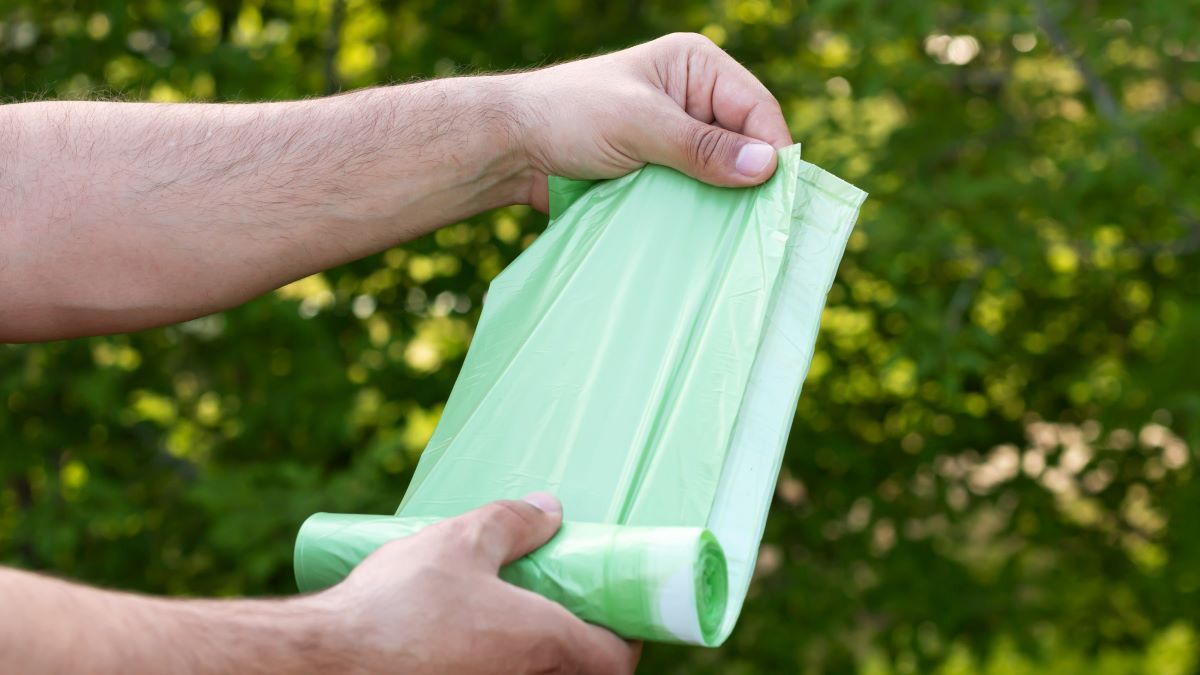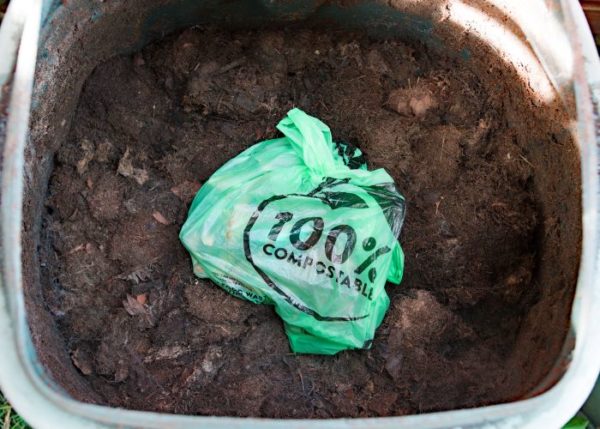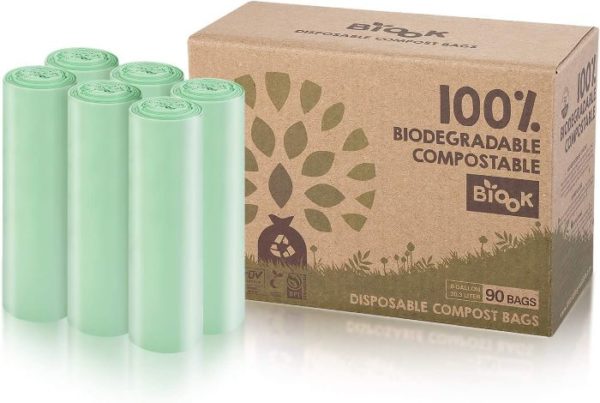Finding Better Biodegradable Bags

Once upon a time, plastic was heralded as a miracle material. Cheap, lightweight, infinitely customizable yet virtually indestructible, plastic quickly replaced natural materials in myriad products – especially bags. Today, plastic bags are ubiquitous for shopping and groceries, and even inside other types of packaging. Plastic bags are found on roadsides, in waterways, and deep in the ocean, where they break down into microplastics that end up in our food.
Biodegradable Is Better
We need to move towards a post-plastic world. Unlike other nonbiodegradable materials like metals, plastic is not infinitely recyclable. In fact, it is often not recyclable at all. What we need is a biodegradable alternative. But creating a biobased material that functions like plastic is a technological challenge; creating a feasible production model for bioplastics is another challenge. Making the switch to biodegradable products can also be as complicated for consumers as making the bioplastics is for manufacturers.
Biodegradable Plastic
Plastic as we know it is made from natural gas, and accounts for between 4% and 8% of global oil consumption. But functionally similar materials can be made from polylactic acid (PLA), which is typically made from plant starch. The other main type of bioplastic is made from polyhydroxyalkanoates (PHAs). PHAs are long-chain polyesters produced by microorganisms and plants. Both types of material are called bioplastics. You will also see them referred to as biodegradable plastics and compostable plastics. Despite the name, not all bioplastic products biodegrade naturally or break down in a compost bin. In one study, only one plant-based plastic bag (of four bioplastics tested) broke down quickly in water, and even that kind survived more than a year buried in soil.

Biodegradable Drawbacks
Many of the desirable qualities of plastic – like being sturdy and waterproof – are opposed to biodegradability. Many bioplastics can only break down in a high-temperature commercial composting facility. Those that are readily biodegradable are not sturdy enough for most products. Easily compostable bags are available, but they need to be stored carefully. They can break down in hot or humid environments before you use them.
Most biodegradable plastic bags still require a commercial composting facility. If your local composting facility accepts biodegradable bags, look for ones with a “BPI certified compostable” label. If you don’t have access to a commercial composting facility that specifically accepts bioplastics, the landfill is usually the best option for disposal.
Bioplastics cannot be placed in with the recycling, even if your community recycles other plastics. Products like compostable plastic bags are a contaminant in recycling because they are chemically different from petroleum-based plastics. There have been some attempts to develop consistent labels that will inform consumers about the best way to dispose of bioplastic products.
Plastic Bags
Bioplastics have mostly been used as an alternative for PET, especially in food packaging like beverage bottles and compostable cutlery. Durables might be a better option for these products. One product category where biodegradability makes the most sense is plastic bags. Even when they are made of a recyclable polymer, plastic bags can’t go in the regular recycling in most communities. A few curbside programs accept bagged plastic bags, but more often, they must be delivered to special collection bins – which are not available everywhere.
Biodegradable Bags
Unfortunately, biodegradable bags are not necessarily more environmentally friendly. As a replacement for shopping bags, biodegradable bags might not eliminate the problem of litter, because many of them don’t break down in the environment. Nor are they a very good substitute for garbage bags; they don’t break down in landfills. But they might break before they reach the landfill, creating litter. Biodegradable pick-up bags for pet waste are only environmentally preferable if your municipal composting facility specifically states that they accept pet waste.
The best use for biodegradable bags is to contain food waste in communities that have a three-bin recycling program that accepts both food and yard waste for industrial-scale composting. Even then, you should confirm that your local composting facility accepts biodegradable plastics before throwing them in the bin.

Compost Bags
BioBag is BPI-certified and even OK Compost Home-certified for home composters. EcoSafe bags are also BPI-certified. Besides food waste bags, they also make compostable grocery bags and a compostable alternative to latex gloves for food preparation. Good Housekeeping rated the BPI- and OK Compost Home-certified bags from BIOOK as the best choice for home composters. Full Circle’s biodegradable compost bag can give you lemon-scented compost collection. They also offer a Kraft paper compost bag with a vegetable-based plastic liner that looks a bit nicer than the standard green bioplastic, and may hold up better in storage.
So now everything is more confusing, do we stick to ordinary plastic bags and put them in the recycling bin, it looks like the answer is no. Are compostable bags really compostable or have they just renamed the type of plastic bag? It just seems like a constant merry go round of complete and utter misdirection and bad information.
The answer is, do not use plastic bags of any description at all, take your reusable bags at all times and if necessary keep an old old ancient plastic bag in your handbag at all times!
The blog song for today is: " Subterranean homesick blues" by Bob Dylan.
TTFN



No comments:
Post a Comment